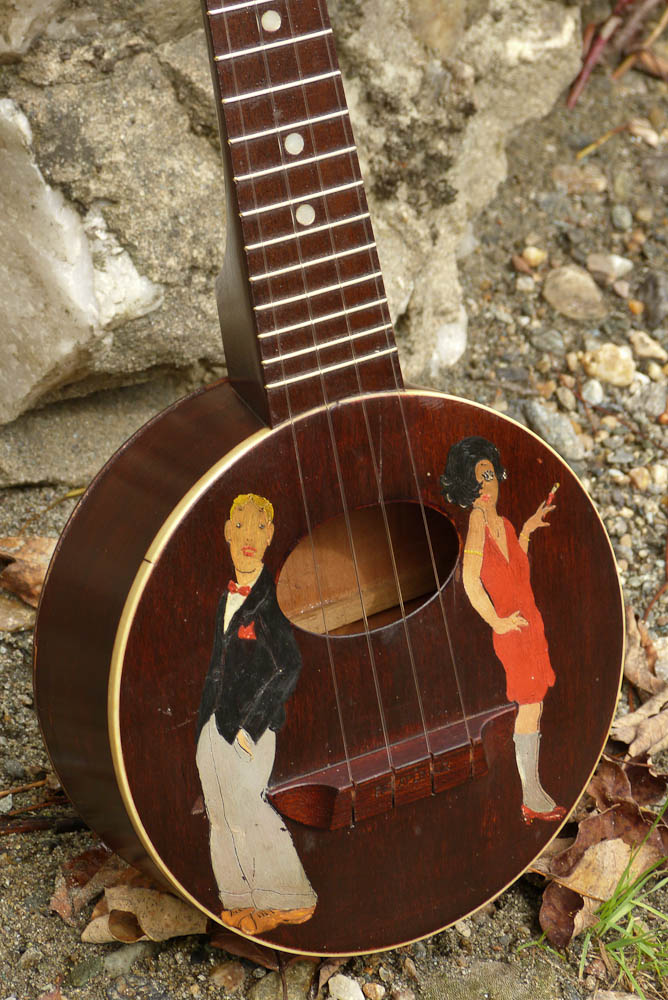Lyon Healy Mandolin Serial Numbers

GUEST: This is actually. It belongs to my husband, but we've been together for over 40 years, and it has gone everywhere we have gone.
American Mandolin, Lyon & Healy, Chicago, Style C. American Mandolin, Lyon & Healy, Chicago, c. 1925, Washburn Style A, serial number 1674, with original case.
When he was about 13, he was in a folk rock band, and he played guitar in his mother's basement, and much to her chagrin. But he had a couple of guitars. And a friend of his wanted one, and so they worked up an exchange. And so he gave him this. My husband's just simply carried this around with him.
He's never played it. APPRAISER: Now, does he know what it is? GUEST: I think he said to me that it's a mandolin, but that's all I know. APPRAISER: Well, that's close. GUEST: It's close? APPRAISER: It's close, but not quite.
This is actually a mandola. GUEST: Never heard of that. APPRAISER: The mandola is related to the mandolin the same way a viola is related to a violin. Mandolas are pretty scarce compared to mandolins, and this particular mandola is extremely scarce.
And it was made by the Lyon & Healy Company of Chicago, and the Lyon & Healy Company of Chicago was perhaps the largest music company in the world at the time. So they came out with this very novel shape which has very sloping shoulders so that the player can have access to the very highest frets. And rather than make the body design asymmetrical, where you just had a cutaway on one side, they gave it a very clean and beautiful symmetrical design. And they gave it a nice big body so that it would have a lot of resonance. And inside, we can see the label of the manufacturer, which is Lyon & Healy, and very importantly, number five, style A.
'A' stood for artist model, but that number five is significant because there were perhaps ten of these made, of which this is number five. APPRAISER: So you've got something that's extremely rare here, and it has some beautiful design attributes: a very close-grained, strong spruce top, an ebony fingerboard inlaid with mother-of-pearl, and up here, we have at the top this violin-shaped scroll. Turning this instrument around, we see that it has a very beautifully flamed tiger maple back. And it is stained to look like walnut, so it's rather dark. And it has sides to match, that same flame maple, and the neck is probably made of cedar.
And this is an interesting material that this face plate is made of here, and it's probably some kind of a hard rubber. And you know what, it's great. GUEST: Thank you.
APPRAISER: (laughing) You'll see these as part of the whole resurgence in bluegrass music. But I'm sure that the value of this is a mystery to you. GUEST: Absolutely. Khatrilive hollywood movie hindi 2009 breaking dawn part 2 dubbed.
APPRAISER: Because there's really nowhere to get a reference on these, other than auction results. And I can say for a fact that the Lyon & Healy mandola number two from about 1920 sold at auction for $6,000. APPRAISER: So I will place an auction value of this instrument at $5,000 to $7,000, and a retail or replacement value at $10,000. GUEST: Oh, my.
APPRAISER: Now your husband can try to figure out how to play it. GUEST: Well, now that he's retired, he certainly can. APPRAISER: Yeah. Executive producer shares her tips for getting the most out of ANTIQUES ROADSHOW. Value can change: The value of an item is dependent upon many things, including the condition of the object itself, trends in the market for that kind of object, and the location where the item will be sold. These are just some of the reasons why the answer to the question 'What's it worth?' Is so often 'It depends.'
Note the date: Take note of the date the appraisal was recorded. This information appears in the upper left corner of the page, with the label 'Appraised On.' Values change over time according to market forces, so the current value of the item could be higher, lower, or the same as when our expert first appraised it. Context is key: Listen carefully. Most of our experts will give appraisal values in context. For example, you'll often hear them say what an item is worth 'at auction,' or 'retail,' or 'for insurance purposes' (replacement value).

Retail prices are different from wholesale prices. Often an auctioneer will talk about what she knows best: the auction market. A shop owner will usually talk about what he knows best: the retail price he'd place on the object in his shop. And though there are no hard and fast rules, an object's auction price can often be half its retail value; yet for other objects, an auction price could be higher than retail.
 By lydia 11 years ago In reply to Desktop Alert Software. Look at Alertgear.com Their prices are the. Open Source 327. We are a small to mid-sized public library and we are looking for a desktop alert system.The thought is this: A customer comes to a.| 4 replies| Software.
By lydia 11 years ago In reply to Desktop Alert Software. Look at Alertgear.com Their prices are the. Open Source 327. We are a small to mid-sized public library and we are looking for a desktop alert system.The thought is this: A customer comes to a.| 4 replies| Software.